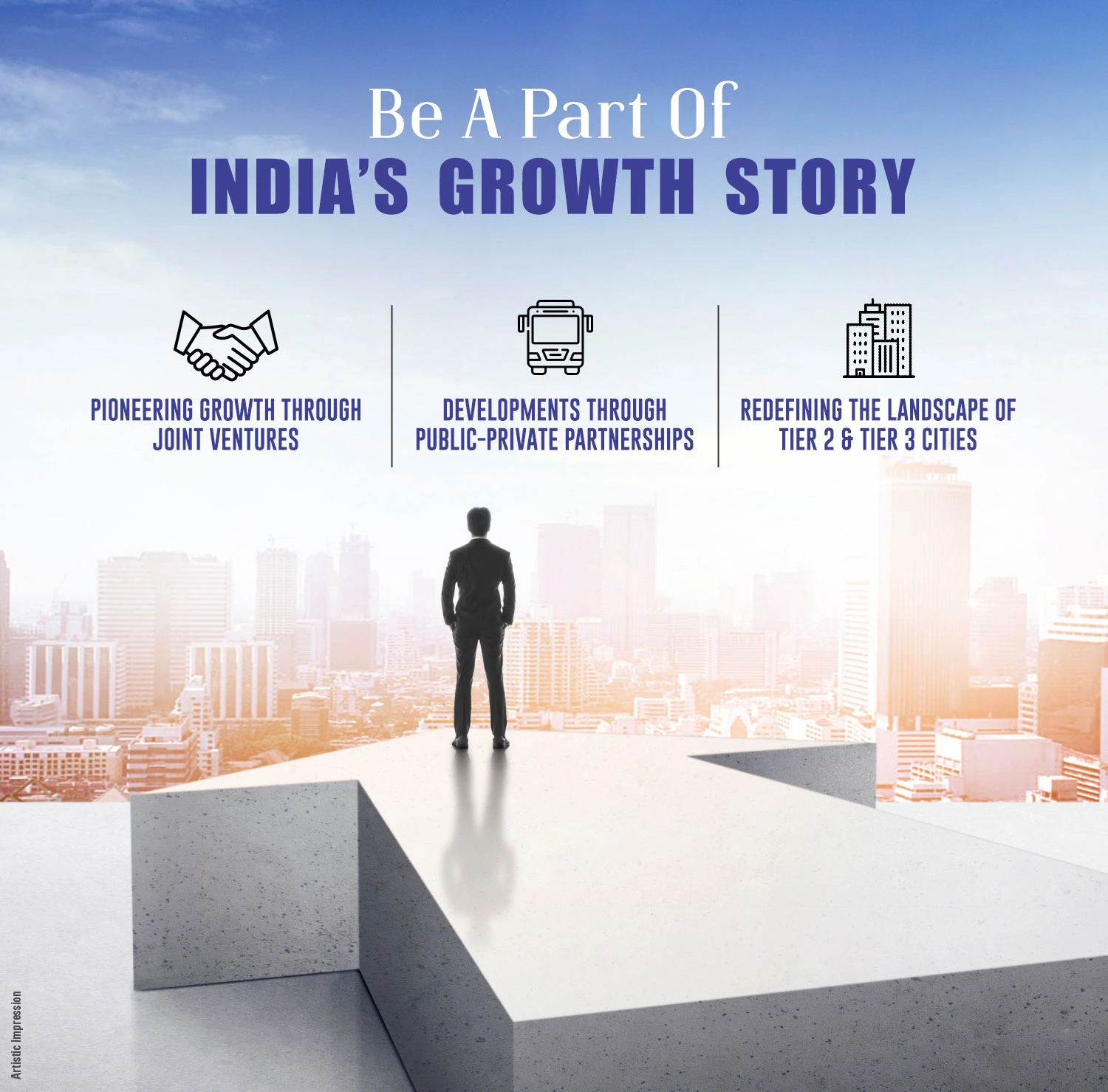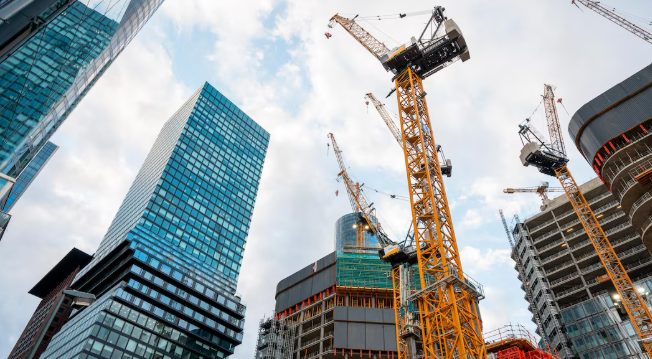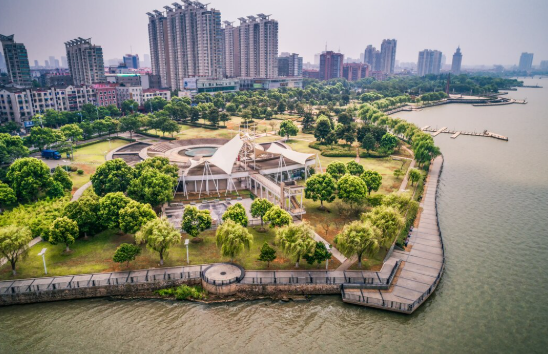
Driving Smart Cities: Role of Private Investment in Urban Infrastructure India
Cities are the engines of modern economies. As India urbanizes rapidly, the infrastructure that supports daily life public transport, terminals, utilities, commercial spaces must scale up not just in size but in quality and connectivity. Private capital is emerging as a critical partner in enabling this transformation, offering resources, efficiency, and innovation. Through its BeTogether program, Omaxe is one of the real estate players demonstrating how private sector involvement can deliver smart urban infrastructure that drives economic growth, elevates quality of life, and builds resilient cities.
Why Smart Urban Infrastructure Needs Private Investment
Government funding and municipal initiatives alone often fall short in addressing all the infrastructure gaps due to budget constraints, regulatory delays, or capacity limits. Private investment brings in several advantages:
- Faster delivery and professional execution through disciplined project management.
- Higher standards of architecture, amenities, and user experience because of competitive pressures and expectations.
- Integration of commercial components (retail, parking, office space) that help make projects self-sustaining.
- Better risk sharing when structured as public-private partnerships (PPPs) or joint ventures.
Together, these features help urban infrastructure do more than just fulfill basic needs they make cities more livable, efficient, and economically vibrant.
BeTogether: Omaxe’s Model for Smart City Transformation
BeTogether is Omaxe’s brand dedicated to urban infrastructure, commercial redevelopment, and joint ventures targeted at improving Tier-2 and Tier-3 cities. The model emphasizes collaboration with local governments, landowners, and public sector agencies to expedite infrastructure delivery with high standards.
One of its flagship initiatives is the modernization of six major bus terminals in Uttar Pradesh under a PPP with the State Road Transport Corporation (UPSRTC). These terminals in Ghaziabad, Lucknow (Gomti Nagar & Amausi), Prayagraj, Kaushambi, and Ayodhya are being upgraded with amenities like AC waiting lounges, digital information systems, food courts, retail spaces, EV charging stations, and enhanced commuter facilities.
The projects are large in scale approximately 70.80 lakh sq ft of built-up area and 45.59 lakh sq ft of saleable area. With investment around Rs 2,700 crore, projected revenues exceed Rs 4,700 crore. These numbers reflect the economic potential of well-designed infrastructure.
Impacts on Urban Mobility, Economy & Society
- Enhancing Public Mobility
Modern transit hubs and terminals reduce friction in commuting. Better design, smoother amenities, and improved connectivity help reduce delays, improve passenger comfort, and encourage use of public transport. EV-charging stations integrated into terminals also support transition to cleaner mobility.
- Boosting Local Commerce
Infrastructure hubs often become magnets for economic activity. Retail, food & beverage, small service shops, and entertainment outlets around these nodes benefit from commuter footfall. BeTogether’s integration of commercial spaces around terminals ensures people don’t just pass through they stay, shop, and spend.
- Job Creation & Economic Multiplier Effects
Construction itself generates jobs engineers, contractors, laborers. Once operational, the infrastructure maintenance, security, cleaning, and retail segments create ongoing employment. The ripple effect touches supply chains, raw material suppliers, and service sectors. With BeTogether’s investment projects, significant economic activity is triggered both during build-out and once the facilities are operational.
- Enhancing Urban Value & Real Estate Appreciation
Infrastructure upgrades tend to increase land and property values in surrounding areas. Improved connectivity and amenities make locations more attractive for businesses and residents. Investors and communities both benefit. Omaxe’s brand under BeTogether shows that combining infrastructure with commercial real estate yields stronger returns.
- Facilitation of Smart City Aspirations
Modern infrastructure projects often include tech-enabled features digital displays, automated systems, smart user amenities. These are critical in smart city plans. Infrastructure that’s built for scale, connectivity, and technology becomes part of broader visions of urban modernization.
How BeTogether Structures its Participation
BeTogether uses models such as:
- Public-Private Partnerships (PPP): For example, upgraded bus terminals via UPSRTC. Shared risk, shared responsibilities.
- Joint Ventures / Joint Developments: Collaborations with landowners and local stakeholders to deliver mixed-use infrastructure.
- Revival of Stalled Projects: Taking over stressed or incomplete development assets and bringing them to fruition with higher standards.
These mechanisms enable faster execution, better resource utilization, and more accountability.
Challenges & How They’re Addressed
While private involvement holds promise, several challenges must be managed:
- Regulatory & Clearance Delays: Land acquisition, environmental approvals, statutory permissions can slow down progress. BeTogether aligns closely with government bodies to streamline these processes.
- Financing & Capital Intensity: Large projects require massive upfront investment. BeTogether’s model raises capital through PPPs and JV arrangements to distribute financial burden.
- Operational Sustainability: Once built, infrastructure must be maintained well utilities, cleanliness, safety. Commercial components (like retail, office) help generate recurring revenue to fund upkeep.
- Community Integration & User Adoption: Infrastructure must meet real needs accessible locations, amenities, transport linkage to ensure usage. Designing with end-users in mind is key.
The Broader Economic Benefits
- Improved Connectivity: As mobility improves, trade, labour mobility, and commerce flow more smoothly.
- Reduced Urban Congestion & Pollution: Upgraded transit nodes encourage public transport adoption, lowering dependence on private vehicles.
- Enhanced Competitiveness of Cities: Cities with better infrastructure attract businesses, talent, and investments. They are more livable.
- Increased Local Revenue: More commercial activity and improved property values increase tax revenues, enabling reinvestment.
How to Choose Partners for Urban Infrastructure Investments
If you are a government body, investor, or landowner looking to collaborate, here’s what to look for:
- Developer track-record of delivering large public infrastructure projects.
- Capability to secure and manage joint ventures or PPPs.
- Financial robustness and ability to deliver on time.
- Integration of commercial elements to ensure revenue sustainability.
- Commitment to design, safety, and technology.
- Local stakeholder engagement and location suitability.
BeTogether demonstrates many of these qualities, evidenced by its bus terminal modernization projects and its approach to integrating infrastructure and commerce.
Conclusion
Private involvement in infrastructure is no longer optional it has become essential for building smart, resilient, productive cities. When real estate developers and government bodies collaborate under models like PPPs and joint developments, the outcomes are transformative: better mobility, thriving local economies, sustainable revenue streams, and enhanced quality of life.
Through its BeTogether initiative, Omaxe is playing a leading role in shaping what India’s urban future looks like: infrastructure that is modern, inclusive, well-connected and above all, built for growth. As more private investment in urban infrastructure India takes shape, cities will be more than concrete and roads; they’ll be engines of commerce, community, and mobility.
FAQs
What is the role of private investment in urban infrastructure India?
Private investment brings capital, technology, and efficiency to large infrastructure projects, enabling faster delivery, improved quality, and sustainable revenue models.
How does BeTogether contribute to smart city development?
BeTogether, an initiative by Omaxe, partners with governments and landowners to modernize key urban assets like bus terminals using public-private partnership models.
What economic benefits arise from private participation in infrastructure?
Private involvement creates jobs, raises property values, boosts local commerce, and generates higher tax revenues for municipalities.
Why are public-private partnerships effective for city projects?
PPPs share risk between government and private developers, ensure professional management, and provide recurring revenue streams for long-term maintenance.





